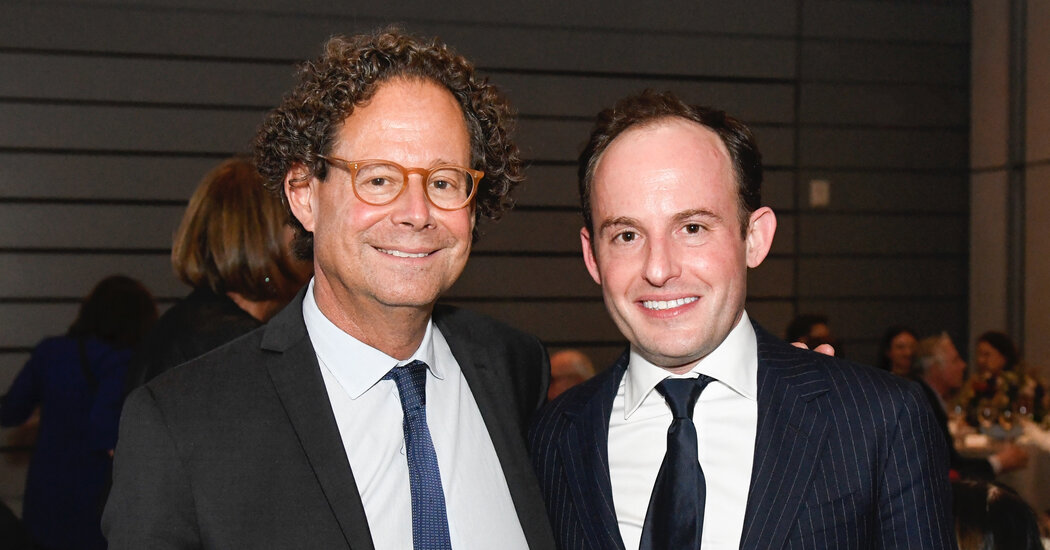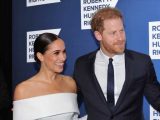
A Changing of the Guard at the Whitney Brings a New Director
03/08/2023After 20 years of leading the Whitney Museum of American Art — and overseeing its risky yet immensely successful move from Madison Avenue to the meatpacking district — Adam D. Weinberg is stepping down as director this fall, the board said on Wednesday.
In an unusual joint announcement, the museum also said it had already selected Weinberg’s successor: Scott Rothkopf, 46, the current senior deputy director and chief curator, who will become director on Nov. 1.
“We have an opportunity to have a seamless transition,” said Fern Kaye Tessler, the president of the Whitney’s board of trustees, describing Weinberg as “a once-in-a-lifetime director” and Rothkopf as “an agent of change.”
“He has helped the Whitney move forward in equity and inclusion,” she added of Rothkopf. “He’s been committed to ensuring that the collections and the staff reflect contemporary America.”
Weinberg’s departure is not entirely unexpected given his age, 68, and his long tenure at the museum. But his departure also signals an inevitable changing of the guard that promises to substantially alter the landscape of the museum world — particularly in New York, as several male museum directors over 65 prepare to cycle out of their positions.
Last July, Richard Armstrong, 74, announced he would retire after more than 14 years as director of the Solomon R. Guggenheim Museum, and a search is underway to replace him. Glenn D. Lowry, 68, the longtime director of the Museum of Modern Art, has a contract that expires in 2025, and a new director is likely to be named soon for MoMA PS1, its affiliate in Long Island City, Queens.
In 2018, Max Hollein, 53, became the new director of the Metropolitan Museum of Art. Recently Sasha Suda, 41, succeeded Timothy Rub as director of the Philadelphia Museum of Art, while at the San Francisco Museum of Modern Art, Neal Benezra, 68, after nearly 20 years at the helm, handed off to Christopher Bedford, 45.
This leadership shift at the top of the country’s arts institutions has been accelerated by a period of cultural ferment amid the reckoning around racial justice, the financial toll of the coronavirus pandemic and the increasing sense of empowerment among younger staff members.
“We really are at an inflection point,” said Madeleine Grynsztejn, the director of the Museum of Contemporary Art Chicago, who is herself widely considered an eligible candidate for major museum director openings. New York, as arguably the most high-profile cultural stage, “has the opportunity to change the face of museum leadership,” she added.
“Don’t mess it up,” Grynsztejn said, citing the importance of naming women as well as people of color. Potential candidates whose names often come up during executive searches include Franklin Sirmans, director of the Pérez Art Museum Miami; Thelma Golden, director and chief curator of the Studio Museum in Harlem; Melissa Chiu, director of the Hirshhorn Museum and Sculpture Garden in Washington; and Naomi Beckwith, the deputy director and chief curator at the Guggenheim.
In an interview, Rothkopf acknowledged that “we still have tremendous work to do” on equity and diversity, but he said he was proud of what the Whitney had accomplished and that he had been committed to those goals “for some time.”
The curator said he had in a way been building toward this professional milestone his whole life. “I came to the museum when I was a kid with my grandparents to look at art and went back to Dallas and made Calder circus animals out of coat hangers,” Rothkopf said. “Then I worked as an intern here in college. So for me there is a lifelong sense of intimacy with this museum.”
He added that it was too early to articulate any concrete future plans for the Whitney, but that his long history with the museum enabled him “to keep moving forward.”
“One of the great things about an internal succession like this is we can continue the work we’ve been doing with equity and inclusion — thinking about our community and the city,” he continued. “We have a tremendous curatorial team and most of them I’ve hired, so it’s not like someone who arrives and says, ‘How do I change this? How do I make this my own?’”
Weinberg said he felt that he was leaving the Whitney in good hands, having worked closely with Rothkopf for a dozen years. “His approach is different, his style is different,” Weinberg said, referring to their generational differences, “but he understands the soul of the institution.”
“It was important for me bring the Whitney to a different kind of place, and I mean that metaphorically as much as physically — a new kind of openness, a new kind of visibility,” he continued. “I said at the board meeting yesterday that the Whitney has always been the artists’ museum but, as one of our trustees said, we’ve also now become the people’s museum and I really believe that.”
Weinberg will work with Rothkopf on the transition and projects including the renovation of the Roy Lichtenstein Studio and Residence as the first permanent home of the Whitney’s Independent Study Program. He will become director emeritus and an honorary trustee.
As director, he oversaw the museum’s move from its Marcel Breuer building on Madison Avenue to its new home overlooking the Hudson River, which was designed by Renzo Piano and opened in 2015.
Under Weinberg, the Whitney’s annual attendance grew to 1.2 million (prepandemic) from 400,000; membership rose to 50,000 from 12,000; and the endowment increased to more than $400 million from $40 million. The staff doubled to more than 400 from 200 and became more diverse, as did the board, which expanded and added the artists Julie Mehretu and Fred Wilson.
But Weinberg’s tenure was not always smooth. In the 2017 Biennial, for example, the artist Dana Schutz, who is white, faced protests for painting the teenager Emmett Till, who was lynched, in his open casket. In 2019, a vice chairman, Warren B. Kanders, resigned from the board after months of protests over his company’s sale of tear gas.
And only on Monday did the Whitney settle its union contract after more than a year of negotiations, marked by demonstrations at exhibition openings and galas.
But Weinberg said he did not feel battle-scarred or burned out. “You need to be part of the conversation and that means you don’t always get to choose the conversation,” he said. “All of these controversies show that we are engaged with our time, that we are relevant, that we are part of the culture, that we are not sitting back.”
With a rumpled professorial aura and an accessible, jovial demeanor, Weinberg has become something of an institution in the art world, with strong relationships to artists, curators and trustees.
At the Whitney, he has overseen more than 300 exhibitions — including nine editions of the Whitney’s signature Biennial — and major installations of the permanent collection, including the inaugural downtown exhibition, “America Is Hard to See,” and the current blockbuster, “Edward Hopper’s New York.”
Weinberg brought nearly 4,000 works into the Whitney’s collection, including pieces by Carmen Herrera and Norman Lewis.
In addition, the director shepherded David Hammons’s installation “Day’s End” at Pier 52 near the Whitney. He also arranged for the collaborations with the Met and the Frick at the Breuer building.
Having earned his bachelor’s degree from Brandeis University and his master’s in fine arts from the Visual Studies Workshop, SUNY Buffalo, Weinberg started at the Walker Art Center in Minneapolis. He joined the Whitney in 1989 as director of its branch at the Equitable Center in Midtown Manhattan, and was made senior curator in 1998. After serving as the director of the Addison Gallery of American Art at Phillips Academy in Andover, Mass., Weinberg returned to the Whitney and was named director in 2003.
Rothkopf has had a rapid rise at the Whitney, starting as a curator in 2009. A dynamic, fast-talking personality with close ties to artists, he was promoted to curator and associate director of programs in 2012 and to chief curator and deputy director for programs in 2015. He became senior deputy director in 2018.
Educated at Harvard, where he earned his undergraduate and graduate degrees in the history of art and architecture, Rothkopf published reviews and articles for Artforum, where he served as senior editor from 2004 to 2009. He began his curatorial career at the Harvard Art Museums, as a guest curator.
Among the critically praised exhibitions Rothkopf helped organize at the Whitney were “Jasper Johns: Mind/Mirror” (2021-22); “Laura Owens” (2017-18); “Jeff Koons: A Retrospective” (2014); and “Glenn Ligon: AMERICA” (2011).
Under his leadership, the Whitney founded an Indigenous artist working group to inform the program and collection, and created a digital art acquisition committee.
He has also hired and promoted more than a dozen curators, including Marcela Guerrero, who last month was named the Whitney’s first Latino senior curator; Adrienne Edwards, director of curatorial affairs; Rujeko Hockley, an associate curator; and Christopher Y. Lew, a curator who left in 2021 to become chief artistic director of the Horizon Art Foundation in Los Angeles.
Weinberg said he had no clear plans for his next chapter. He recently completed a sabbatical in Italy, where he enjoyed having time to write and to visit artists’ studios. “I’ve been with institutions for 50 years,” he said. “Now is my chance to think freshly.”
He likened this juncture in his career to the moment before a painter starts in on a new work of art. “OK, we’re staring at a blank canvas,” he said. “What can we invent?”
Source: Read Full Article

